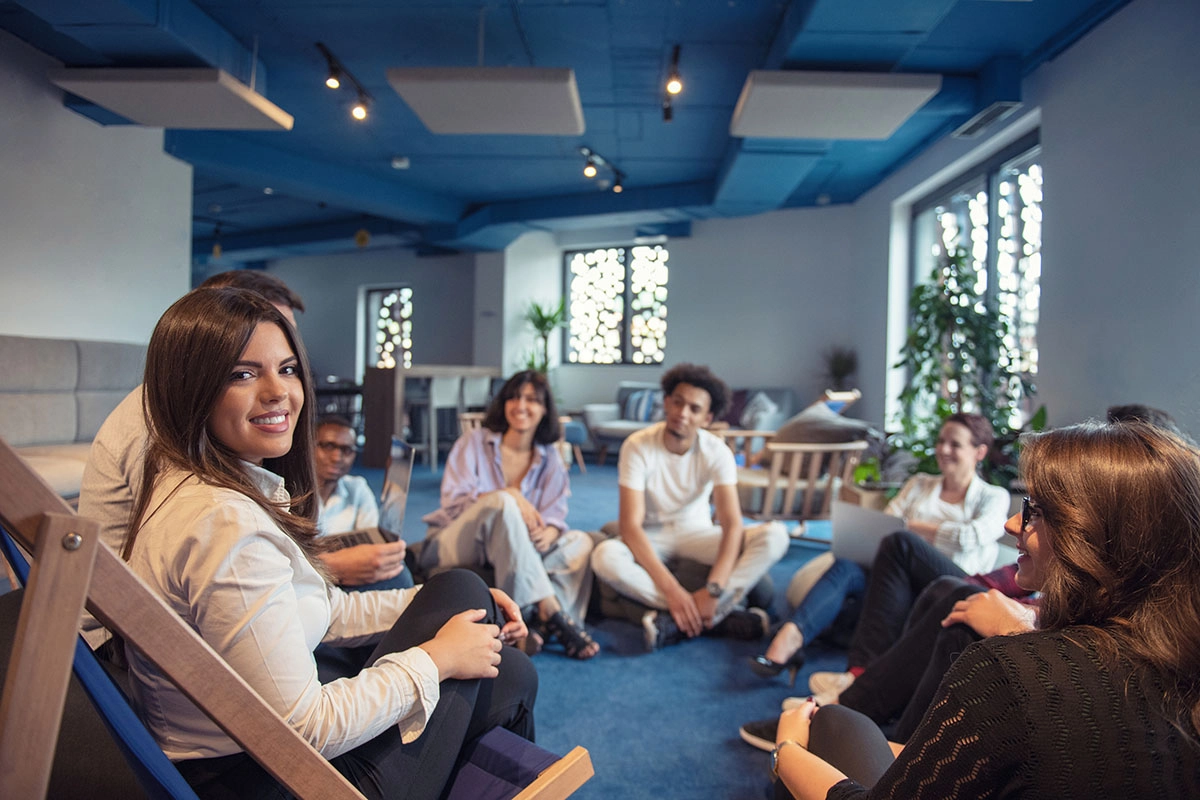Imagine this: working crazy hours, feeling overwhelmed, and not seeing much growth despite all the effort. My brother Michael and I were caught up in the chaos, bombarded with questions from our growing team. Stress was off the charts. We realized we were stuck in a rut, running things like a small mom-and-pop business, even micromanaging the choice of toilet paper brands. During the summer I would send my family on vacation without me so that I could spend more time working. Then, I realized finally – something needed to change.
The Wake-Up Call
After realizing that we were following the same old playbook our parents used: work harder than everyone else and control every little detail, my brother and I had a conference. How could we do it better while loosening the reins? After a day of reviewing our business with my mentor William Efird, he hit us with a reality check: "Is this what you want? Are you happy with the results?" Five years of the same routine, all of which didn’t lead to exponential growth, and we knew it was time for a new approach. The saying about insanity and doing the same thing over and over? It hit home.
Moving from Business to Intentional Business
Dr. W. Edwards Deming once said, “Every system is perfectly designed to get the result that it does.” That got us thinking – our business had a system, but was it intentional or just accidental? Was the system that got us here the same one that could take us higher? In 2015, we started utilizing the Four Disciplines of Execution, shifted to Entrepreneurial Operating System (EOS) in 2017, and eventually moved to the Pinnacle Business Operating System.
Learning to Let Go
Intellectually, we understood that we were the bottleneck to growth – notice that the neck of the bottle is always at the top. But emotionally learning to let go is much harder than the initial decision that it must happen. I'll admit, I had some control issues (and probably still do). EOS and Pinnacle are supposed to help leaders like us trust our teams more – easier said than done. Letting go of the sales leader role was tough for me. My identity was all wrapped up in it.
Spoiler alert: I never fully let go, and it cost us a great leader.
Right People, Right Seats
As we upgraded our "operating system," we figured out who the "right people" were for us. Then, we defined what roles we needed, starting with the leadership team. This of course comes from Jim Collins' seminal book, Good to Great – which discusses the idea of having the right people in the right seats. At first, Michael and I wore many hats. But eventually, we brought in leaders for sales, operations, and finance. It took the load off us and added energy and efficiency to our operations.
Owning the Decision
I remember a planning session where another team member and I argued loudly about a sales issue. Michael Erath, our Guide, stopped us and asked, "Who owns the decision?" We both stopped dead in our tracks and pointed at the sales leader. Erath then asked our sales leader, "Do you have all the information you need to decide?" And of course, the answer was "yes". The key mindset we had to adopt is that these leaders own their functional responsibility which means they own the results and the decisions.
Mindset 1: Trust your leaders to own their part of the business.
If you don't trust the leader to make their decisions, you need to ask yourself why. Is it because you don't believe in their capabilities or is it because you are having trouble letting go?
A-Players are Always Free
Growing our leadership team meant dealing with the cost of new positions, especially at the leadership level. But we learned that A-players pay off. Their ability to get results is way more valuable than the cost difference from a B or C Player. This is exponentially true as you bring in expertise that allows you to focus your time on what you love and are great at.
Mindset 2: Players are Always Worth It
Mistakes Happen
I haven't always handled mistakes gracefully. There's a family story about me losing it when a child spilled milk at Thanksgiving – not exactly my best moment. We had to learn that mistakes are part of the deal as you empower others. It's a learning process.
Another now infamous story that comes from my dad is about one of our counter-people who accidentally sold the wrong voltage unit to a customer who then proceeded to install it. The "smoke" got let out of the unit. The employee thought my dad was going to fire him. My dad's response? "Why would I fire you when I just invested $5000 in your education?" Over the years I have learned that as you empower and entrust others, they will make mistakes – this is part of the learning process.
Mindset 3: We learn from failure, not success.
Recently, a warehouse person knocked over some shelves with a forklift, costing us about $50,000 in damaged products. We turned it into a learning opportunity – reviewing what happened, how it happened, and what we needed to do to prevent it in the future.
Address failures and use them as a tool for learning.
• What happened?
• How did it happen?
• What do we need to do to fix it right now?
• What can we learn from this?
• What do we need to do to make sure it doesn't happen again in the future?
This was a tremendous learning opportunity for all involved. We implemented forklift train-the-trainer training across all our locations and identified warehouses with racking that needed to be bolted down.
Decentralized Decision-Making
Moving from a place where Michael and I made all the decisions to one where our front-line folks were empowered to make decisions, required a plan. Now, our decision-making checklist is very straightforward – partially adapted from the book Scaling Culture.
1. Is this good for the customer?
2. Is this good for the JSOG?
3. Are you willing to be accountable for this decision?
We think policies can't cover every situation, so we trust and empower the front line to decide.
Here is a real-world example from our company. Recently, Damon Williams, Stockton Store Manager, made a judgment call. A new dealer had issues with the first two package units he installed. The first one had a bad inducer and there were none available anywhere, but Damon went the extra mile and discovered one at an alternate source. The second unit was DOA and Damon made the judgment call to swap the unit out with a new unit. This quick thinking helped our customer to look good in a difficult situation with their homeowner. This also helped to protect the equipment and Johnstone brands. Damon’s actions helped to build confidence and trust with a new dealer, which built the foundation for a long-term partnership.
Mindset 4: Trust your front line to make decisions.
As we have grown, we have needed to constantly evolve our operating system. In addition to a leadership team, we now have a mid-management team. We started to see misalignment and silos between departments. This past year we implemented a new planning process based on the concept of Direction, Alignment, and Commitment (DAC) from the Center for Creative Leadership. Shortly after our leadership team completes our quarterly or annual planning retreat, we pull together the entire leadership and mid-management team and:
1. Review each department’s quarterly results and accomplishments.
2. Review the direction the company is going in.
3. Each team creates their quarterly/annual plan.
4. Each team presents its plan to the entire team - this gives everyone a chance to ask questions, give input, and identify cross-department issues or constraints.
In the ever-changing world of business, change isn't just a choice – it's how you survive. Trusting your team and letting those on the front lines make decisions isn't just a fancy strategy – it's the key to growth and success. Success means empowering people at all levels, using the model that works for your business. Our model might not be yours, but with some thought, you can use these tips to configure what works for you. We're always reevaluating our system and mindset because what brought us here won't always be the same thing that takes us further.
As Ryan Kalmbach is the CEO of Johnstone Orion Distribution with twelve locations and 125 employees located in California. He has over 20 years of experience in operating a family distribution business. The core passion at The Orion Group is to partner with its customers and employees to help them to grow. Ryan can be reached at ryan.kalmbach@johnstonesupply.com






